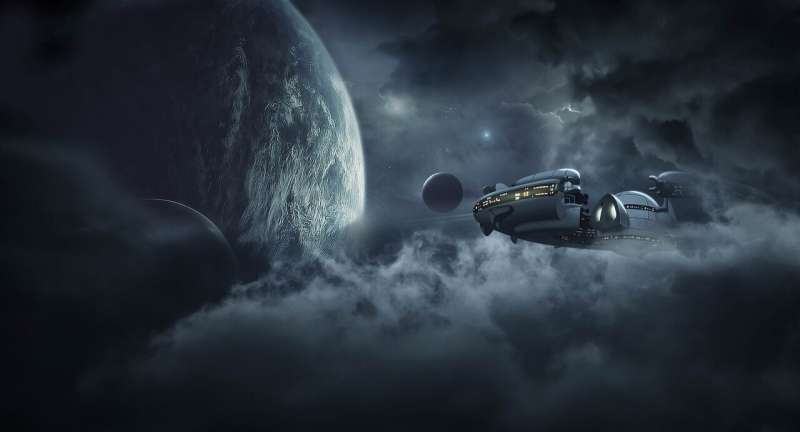This article has been reviewed according to Science X's editorial process and policies. Editors have highlighted the following attributes while ensuring the content's credibility:
fact-checked
preprint
trusted source
proofread
If warp drives are impossible, maybe faster-than-light communication is still on the table?

I'm sure many readers of Universe Today are, like me, fans of the science fiction genre. From the light sabers of "Star Wars" to the neuralyzer of "Men in Black," science fiction has crazy inventions aplenty and once science fiction writers dream it, scientists and engineers try and create it. Perhaps the holy grail of science fiction creations is the warp drive from "Star Trek" and it is fair to say that many have tried to work out if it is even possible to travel faster than the speed of light. To date, alas, to no avail but if the warp drive eludes us, what about faster-than-light communication.
Let's start with the warp drive. The concept is a drive that can propel a spacecraft at speeds in excess of the speed of light. According to the "Star Trek" writers, the speed was described in factors of warp speed where they are converted to multiples of the speed of light by multiplication with the cubic function of the warp factor itself. Got it. Don't worry, it's not crucial to this article. Essentially, "warp 1" is equivalent to the speed of light, "warp 2" is eight times speed of light and "warp 3" is 27 times the speed of light and so it goes on. Therein lies the problem; achieving faster-than-light travel.
In attempts to understand this, numerous experiments have been undertaken; of note, Bill Bertozzi at MIT accelerated electrons and observed them becoming heavier and heavier until they couldn't be accelerated any more. Once at the speed of light, it takes an infinite amount of energy to accelerate an object further. The maximum speed he achieved was the speed of light. In other experiments, synchronized atomic clocks were taken on board airliners and found that, after traveling at high speed relative to a reference clock on Earth, time had run slower. The upshot is that the faster you go, the slower time passes and at the speed of light, time stops. If time stops, so does speed. This is tricky.
The science of faster-than-light travel aside, a number of potential warp drive designs have surfaced like the Alcubierre drive proposed in 1994. However, the common factor to provide faster-than-light travel is something called negative energy which is required in copious amounts. The study of quantum mechanics shows that even empty space has energy and anything that has less energy than empty space has "negative energy." The problem (among many) is that no one knows how to get negative energy in huge amounts to power the warp drives.
It seems the warp drive is some time away yet, but could faster-than-light communication work? Accelerating macroscopic objects like spacecraft requires high amounts of negative energy, but communication, as a recent paper explains, which operates at a much smaller scale, requires less energy—quite a bit less, in fact, than is contained inside a lightning bolt. Perhaps more tantalizing is that we may just be able to create small amounts of negative energy using today's technology.
One of the ways this can be achieved is to ensure the proper configuration and distribution of negative energy to channel communication. The paper, posted to the arXiv preprint server, proposes a tubular distribution of negative energy in so-called hypertubes to enable the acceleration and deceleration of warp bubbles for superluminal communication. Achieving this for long-distance communication will require special devices to be designed and built but as the author of the paper, Lorenzo Pieri, concludes, "It is tantalizing to consider the fabrication of microchips capable of superluminal computing."
More information: Lorenzo Pieri, Hyperwave: Hyper-Fast Communication within General Relativity, arXiv (2023). DOI: 10.48550/arxiv.2311.12069
Journal information: arXiv
Provided by Universe Today


















